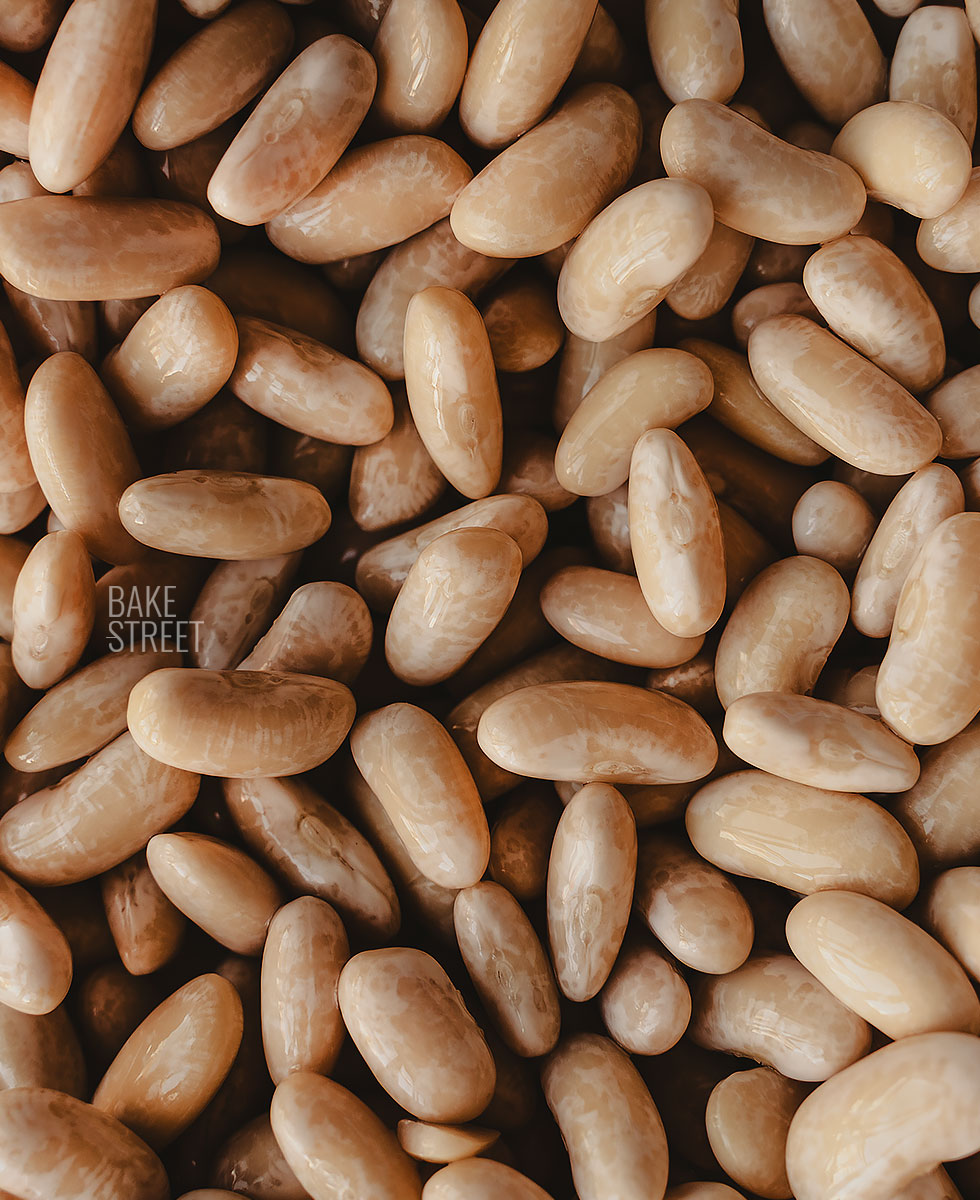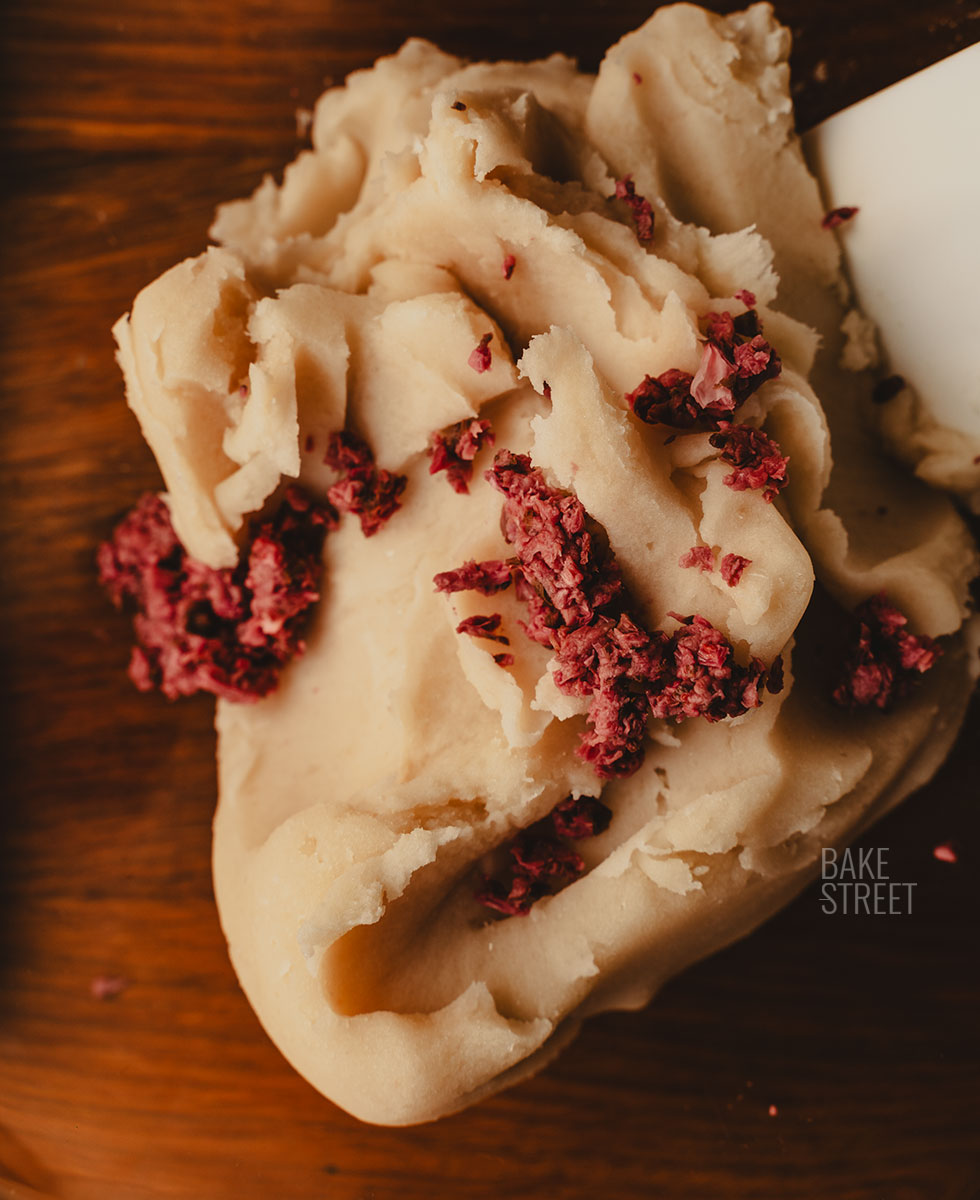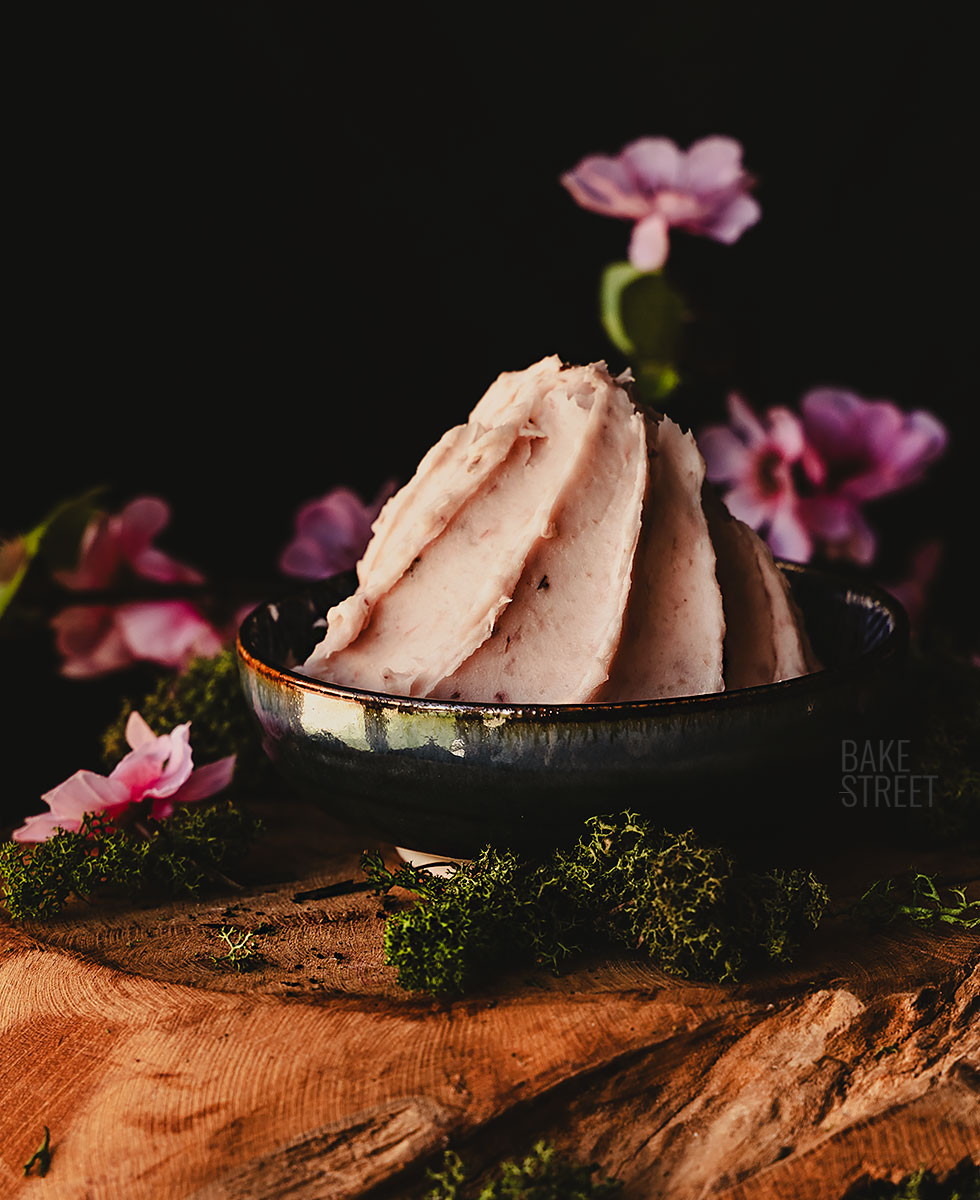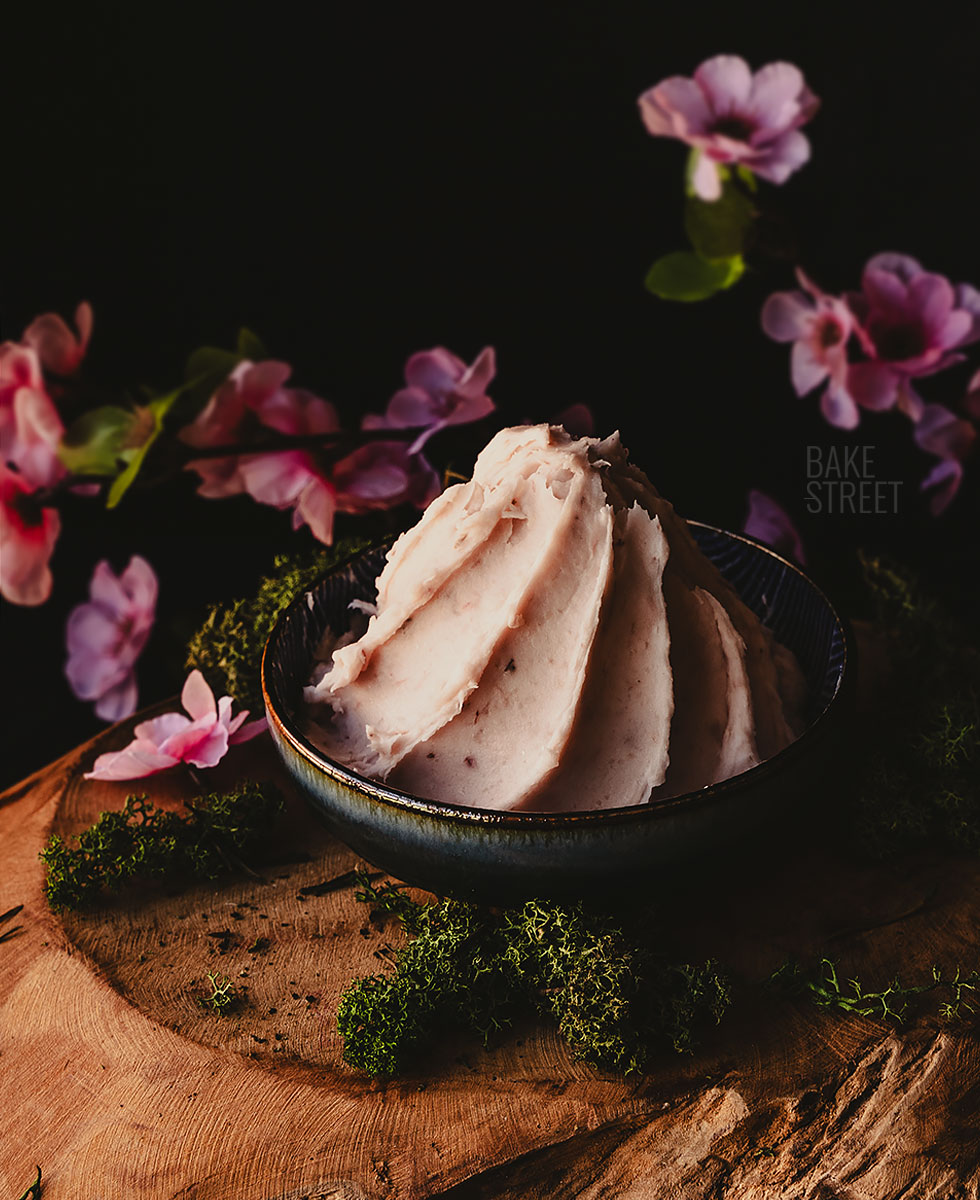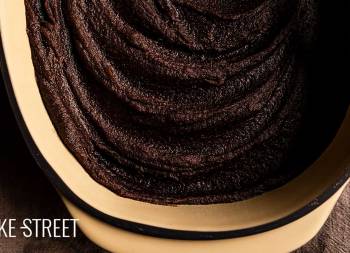
How to make Sakura An, pickled cherry blossom bean paste
Before the summer started I had a keen interest in finding pickledSakura cherry blossom. The reason for this is that I was obsessed with preparing Sakura An, salt pickled cherry blossom bean paste. I searched a lot, in fact I even shared it through my social networks to see if you could give me a hand to find it because there was no way. In Spain it is much more complicated than in other countries.
I wrote to several people to see if I could get it and, the truth, they were very expensive. I almost had it for lost… But I kept looking and I came to this store. I do not know if I did not search with the exact and correct words to locate them or their product was not well specified to be easily found in Google. The fact is that I found them, bought and now I have them in my hands to enjoy them very much. These things make me immensely happy.
As I have been doing for several years, at this time of the year, I like to leave you recipes to celebrate the Mid-Autumn Festival, a very important celebration in China. This preparation that I leave you today, will be part of another one that I will leave you briefly. Since both processes are laborious, I preferred to divide the recipe into two parts. In addition, this filling can be used for many other preparations, such as mochis for example, not only the one I will leave you in a few days.
Sakura An is made with a base that many of you probably already know. Especially if you are lovers of Japanese gastronomy. Shiro An or white bean paste. So our first step will be to prepare this white bean paste and then season it with pickled cherry blossoms.
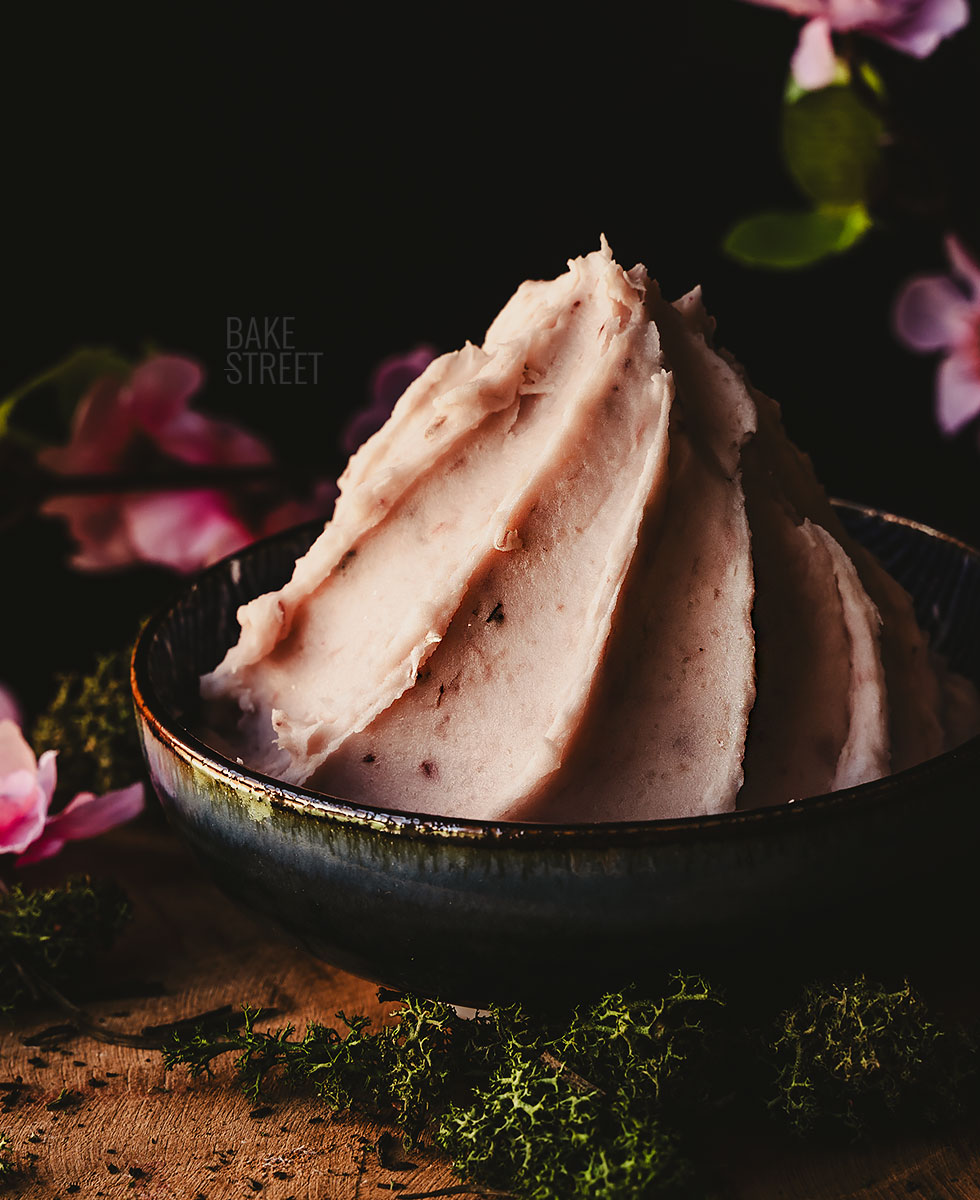
Shiro An.
White bean paste or Shiro An (白餡, 白あん) is a paste made from shelled, cooked, pressed and sweetened beans. It is mainly used as a filling for sweet desserts and cakes in Japanese and East Asian cuisine. Its flavor is very soft and delicate, believe me you would never say that it is an elaboration made from a legume.
For those of you who like Anko or red azuki bean paste, in this post I explain the whole process, as well as its origin. And, in the video of these mooncakes, you can watch its elaboration process.
Bean paste, whether white or red, is traditionally made with the same amount of sugar as the weight of dry beans. It is possible that, for many palates (including mine) it is too sweet. This amount can be reduced to a maximum of 2/3 of the weight of beans, i.e. in my case I use 250 g of beans so the minimum amount of sugar would be about 166 g of sugar. This ingredient helps to preserve the pasta over time, as well as sweetening it and making it more fluid for cooking.
In this case and unlike anko, we will not need to add any type of oil or fat. The texture of this type of bean is very creamy and, after pressing and passing the cooked beans through a strainer, we obtain a very soft and delicate paste.
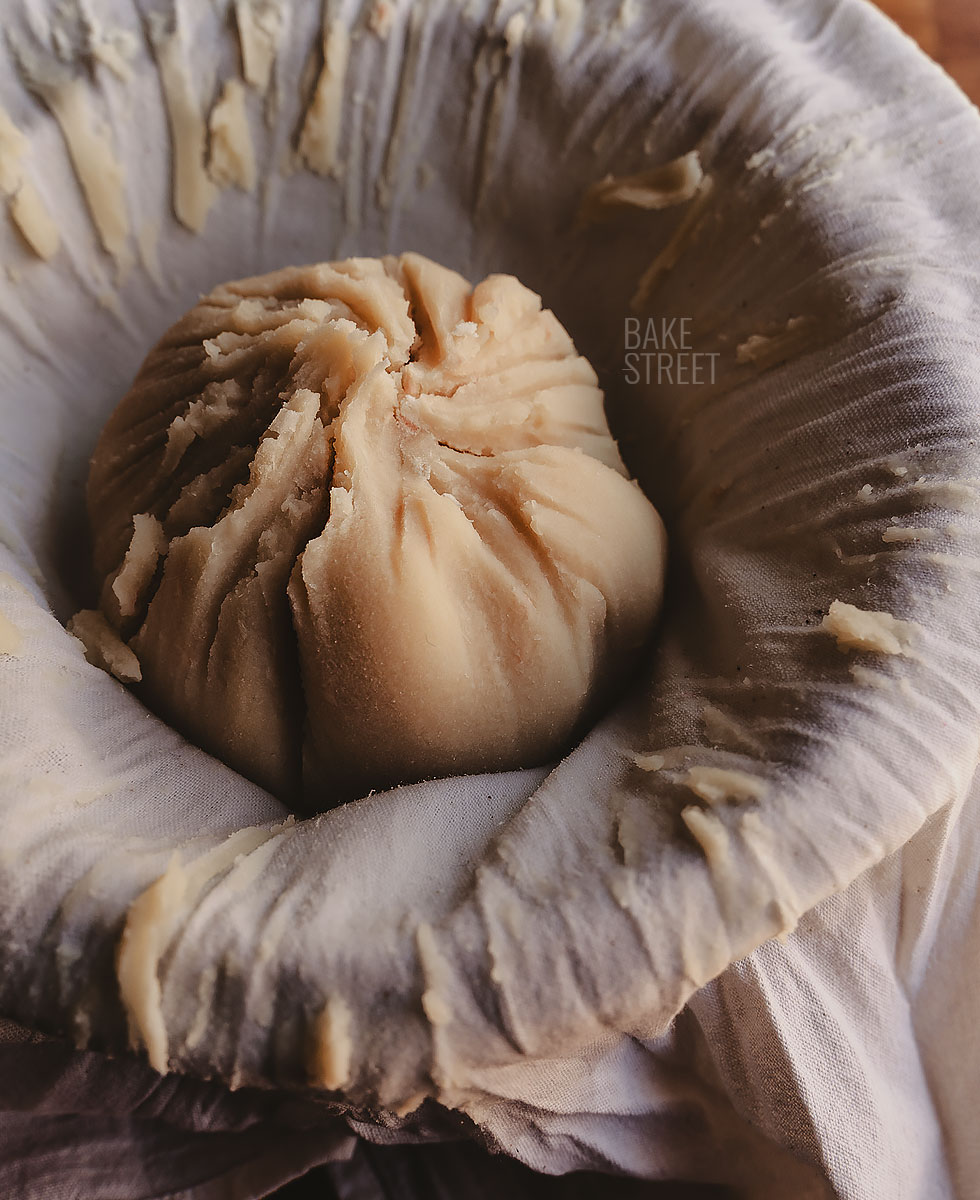
Sakura cherry blossoms.
My retina has engraved images and pictures of the wonderful walks full of cherry blossoms… And not because I have visited Japan (a place where, by the way, I really want to go), but thanks to films, videos, photographs or documentaries.
Sakura cherry blossomis one of the most fascinating and incredible phenomena on the planet. Come spring, you can enjoy a floral spectacle full of pink tones as you make your way through them.
In fact, there is a Japanese tradition, Hanami(花見, its translation would be “to look at the flowers“), which consists of observing and contemplating the beauty of flowers with an attitude of amazement before the phenomena of nature. This term is usually associated with the cherry blossom period, when both Japanese and tourists come to contemplate the Sakura gardens and parks.
This celebration began in the Meiji era and has been preserved ever since. The Japanese carry out this custom accompanied by food, drink, poetry and even music.
Sakura cherry trees are a symbolic element of popular culture in Japan, where they have multiple meanings. For example, the image of the petals of these flowers falling on the ground and leaving a pink mantle at the beginning of spring, symbolizes the beauty of nature and captures the deep meaning that the transience of existence confers to life.
The Japanese associate this transitory nature with the fragility of their own existence. For this reason, the natural phenomenon in which flowers die with the arrival of summer is known as hana fubuki, cherry petal rain.
花 -> Hana -> Flower or petal 吹雪 -> Fubuki -> Snow storm
In this link you can watch a video of this wonderful natural phenomenon.

Samurai.
Japan’s samurai culture also had great admiration for this flower as samurai (like cherry blossoms) were considered to have a short lifetime. The bushidō (武士道) or “way of the warrior,” created by Inzao Nitobe, is known as the samurai code.
It was a strict ethical and moral code, to which many samurai gave their lives, and which demanded loyalty and honor until death. Its aim was to soften the warlike behaviors of the samurai in Western eyes. The bushidō was symbolized by the cherry blossom.
The ideal of the samurai was to live with passion or “live with beauty” (美しく生きる, read “utsukushiku ikiru“), that is, to live with sincerity and inner harmony, despite being able to possess a short life.
According to legend, Sakura flowers were originally white.
But they were dyed pink when mixed with the blood of the warriors at the foot of the trees. The samurai, when committing a serious breach of the code of ethics, would commit seppukuor also erroneously called harakiri. It is said that they chose these places to take their own lives, so that they could have one last experience of beauty before dying by their own hand.
The Sakura cherry blossom represents innocence, simplicity, the beauty of nature, gentleness, youth and rebirth.
The Kikuzakura variety of the Kenrokuen (兼六園菊桜) is a type of sakura cherry tree found only in the Kenrokuen Garden in Kanazawa, one of the three most famous gardens in Japan. In fact, the only place where this variety exists is in Kenroku Park, which is considered an almost extinct natural treasure today, as only two Kikuzakura trees are said to remain.
In each of its flowers, you can count up to 300 petals, giving rise to flowers of incredible beauty. It would be impossible for me not to stop and contemplate them…
Pickled Sakura cherry blossoms.
Undoubtedly the protagonist of our elaboration today are salt pickled cherry blossoms. I must say that I have never tasted or smelled anything like it before. It is really surprising and very pleasant. If you have not tried them yet, I strongly encourage you to enjoy this delicate Japanese preparation.
To dive into the history of pickling in Japan is to travel through the centuries and delve into the roots of its culinary traditions. This method of preservation originated in China and was brought to Japan during the flourishing Nara period (710-794).
The art of pickling was initially used to preserve vegetables and fish. However, over time, this process became a distinguished art form that was not only used for preserving, but was also applied to foods to enhance natural flavors. In this way, truly unique and unparalleled taste profiles were achieved.
Today, pickling in Japan represents a fusion of craftsmanship and culinary excellence, where after careful selection of ingredients, a perfect balance of salt, vinegar and other seasonings is achieved. In short, the art of preserving cherry blossoms in vinegar and salt is a beautiful tribute to nature and the fleeting beauty of these delicate flowers.
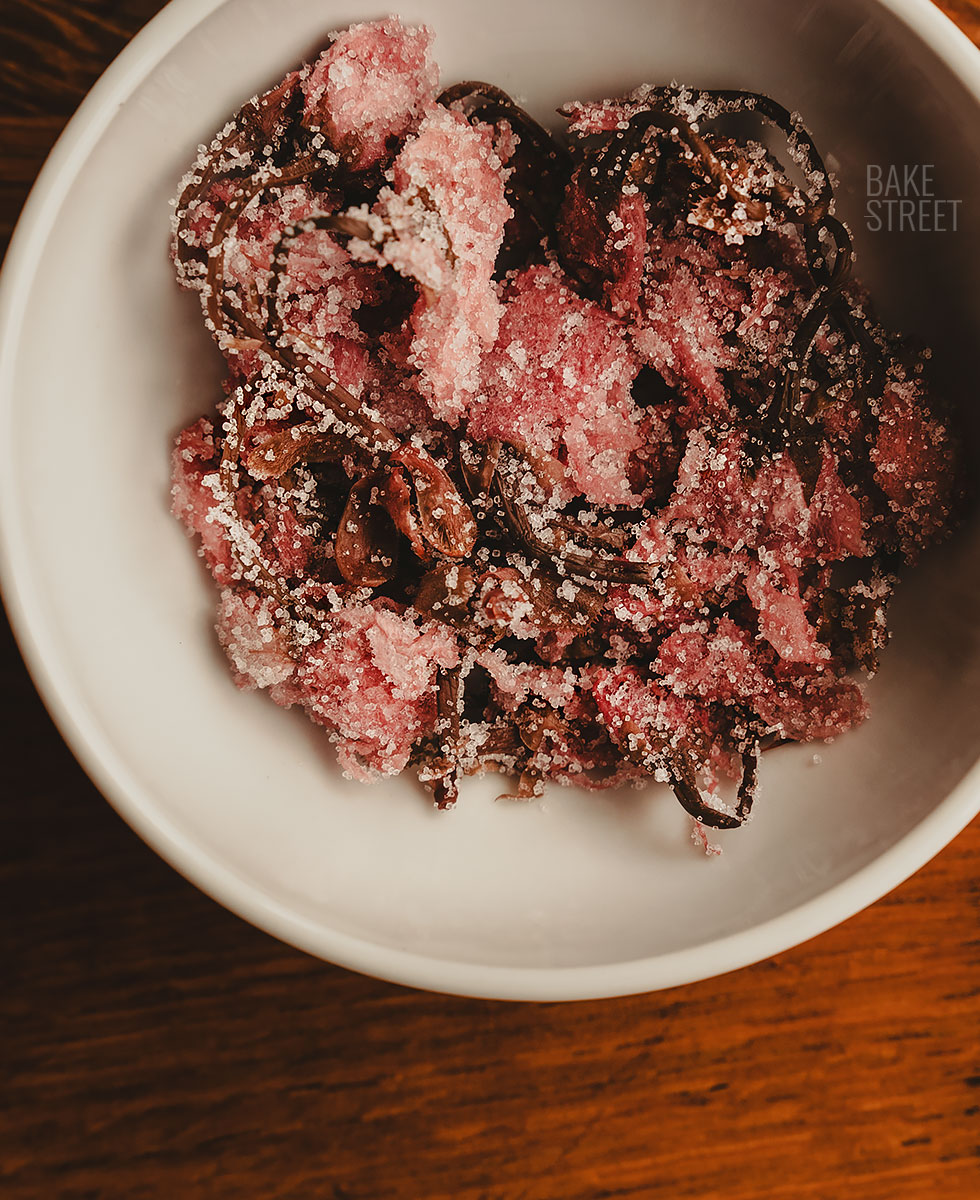
Capturing nature in an eternal moment.
This process captures all the essence of the flowers, allowing us to enjoy them all year round.
I would dare to say that this culinary art reflects a deep respect for nature while helping us to connect with it. A token of love that is passed down from generation to generation thanks to its cultural traditions.
Choosing a suitable sakura variety is an essential step in the pickling process.
It seems that the two most commonly used varieties in Japan for pickling cherry blossoms are Somei Yoshino and Yamazakura. Although there are many other varieties. The former is noted for its pale pink petals, floral flavor and elegant appearance, and is often preferred by many pickling enthusiasts. On the other hand, the second one has a darker tone and a more intense flavor. Ideal for those who prefer more robust flavors.
Origin of Sakura tea.
The production of pickled sakura, or sakurazuke (桜漬け), began in the late Edo period (1603-1868) in Chimura, Hadano City, Kanagawa Prefecture, and today approximately 80% of sakurazuke is produced in this area. Each year, starting in mid-April, a late variety of yaezakura (八重桜) -double flowering cherries- is harvested when they are halfway through their flowering period.
The carefully harvested young buds are then salted after a meticulous washing, draining and drying process, then pickled in a light ume plum vinegar, which helps to enhance and set their pink color. Finally, they are covered with salt.
To pickle cherry blossom, traditionally, salt and ume plum vinegar are used.
Later, pickled sakura is used in a wide variety of Japanese preparations: tea, alcohol, sweets, rice….
What can pickled Sakura be used for?
Pickled cherry blossom offers many culinary possibilities, adding a touch of elegance and visual appeal to our dishes or drinks. In Japanese cuisine, these flowers are often used as a garnish for traditional sweets such as wagashi (わがし). It can also be used in salads, rice bowls and even cocktails. And, of course, this Sakura An bean paste. Although perhaps the most widespread or known may be in tea.
The proportions for making Sakura An vary slightly. It is advisable to use between 5-10% of pickled cherry blossom based on the total weight of dried beans. In my case I used 8% and we were delighted with the result.
Sakura tea is usually served at unique events, such as weddings or important ceremonies, as it represents a “new beginning”. Although you can also consume it every morning if you wish, because every day you wake up, it is a new beginning.
To consume it in tea, part of the outer salt is usually removed by immersing them in warm water. Afterwards, they are placed in cups and hot water is poured over them and left to steep. If you want a slightly saltier tea, you can add 1-2 teaspoons of the first water.
It is wonderful to contemplate the flowers submerged in the water once they have opened…. The result is a tea and slightly sweet, salty and floral notes. A pleasure for the eye and the palate.
Recipe Sakura An, bean paste with cherry blossoms
- 250 g white beans
- 20 g pickled Sakura cherry blossoms
- 200 g sugar
- 3 g salt
- pinch of coloring paste, I used Sugarflair's "Claret" color (you can substitute it with red rice yeast or beet powder).
MATERIAL WE WILL NEED AND SHOWN IN THE VIDEO:
- bowls
- digital kitchen scale
- colander
- my container for soaking beans is this*
- large pot
- silicone spatula or wooden spoon
- wide frying pan, mine is De Buyer 28 cm in diameter*
- cheesecloth
- crystal container
- cutting board + sharp knife
*In these products you have a 5% discount on the website Claudia&Julia using this code BAKESTREET. Delivers throughout Europe.
Instructions
NIGHT BEFORE
Soak white beans.
- Rinse the beans thoroughly under cold running water. Remove any broken, discolored or damaged beans.
- In a glass container, add the white beans and cover with enough water.
- Cover and leave at room temperature for 12-14 hours.

NEXT DAY
Peel beans.
- To achieve a creamy and smooth texture, we will have to remove the peel from the beans. Although it may seem complicated, after being soaked for 12 hours, the skin comes off without any problem.
- In the video you can see that I remove the water from the beans to peel them. Do not remove them from the water. As long as they stay wet, the skin will come off very easily. If we strain them, as they dry, the process of removing the peel becomes more laborious (in my case, I submerged them in water again after observing this behavior).

Cook white beans.
- Transfer to a large pot and cover with water until there is about 3 cm of water above the beans. Never more because we do not want the beans to move too much through the water.
- Place on medium high heat and let the water come to a boil.
- Once it starts to boil, reduce to medium heat and let it boil for 2 minutes.
- Drain the beans in a colander and discard the water.
- Put the beans back in the pot and cover with water in the same way as the first time.
- Place on medium high heat until it comes to a boil. Once it comes to a boil, reduce to low heat (always maintaining a gentle boil) and cook for 45-50 minutes. We must control throughout the cooking time the amount of water because it will be reducing. We will have to add more whenever necessary and, when we do so, we must add cold water.
- From time to time, we will check the surface and if it has foam, we will remove it.
- After 30 minutes we will check the tenderness of the beans, when they are tender and we can crush them between the fingertips, they will be ready.
- Dump the beans in a colander, with a cheesecloth and a bowl underneath. We reserve a small part of water in case we need it.
- Take the cheesecloth, joining the corners, lift and begin to exert a little force to remove liquid and achieve a paste.
- NOTE: Before transferring the bean paste to a wide pan to cook it, I advise you to pass the paste through a strainer. With this step, we can remove possible sprouts and achieve a much finer and smoother texture. In my case I did it after adding it to the pan and observing that there were some small sprouts. Since I passed the paste after adding the sugar, it was not necessary to add water. If you pass the paste before adding the sugar, which would be the correct step, you will have to add a little of the cooking water to soften it and be able to work with it better.
Preparel Shiro An, white bean paste.
- Place the bean paste in a large saucepan or pot with the sugar and salt and cook, stirring constantly over medium-low heat, until the sugar is completely absorbed. You will notice that, when the sugar is added, the mixture liquefies. This is because sugar is hygroscopic, which means that it absorbs moisture from the environment.
- We must dry the bean paste until we obtain a mixture with density and that we can model later. This process can take about 25-30 minutes. Remember that we cannot stop moving the paste during the whole process, otherwise it may stick to the base and burn. This will result in a bad tasting product.
- The paste will be ready when we can fold it on itself and it will hold. I decided to dry the paste a little longer because integrating the cherry blossom will give it a slightly softer consistency.
- Remove from the heat and then transfer the bean paste to a container. Spread, cover with film and let it cool completely.
- At this point we can proceed to incorporate the Sakura flower or keep it in an airtight container in the refrigerator.
Prepare Sakura blossoms.
- Put the Sakura flowers in a bowl and cover generously with water. Stir gently to encourage them to release salt. Let stand for 3-4 minutes.
- Remove the water, cover again with fresh water in the same way as the previous time, and let stand to hydrate for 3-4 minutes (this time can be extended to 10 minutes if desired). I advise you not to exceed much more the time of rest in the water to avoid that they lose all the flavor.
- Take the flowers out of the water and place on kitchen paper. Remove the excess water carefully, pressing with the paper.
- Remove the stems and finely chop the flowers with a very sharp knife.
Prepare bean paste with cherry blossoms, Sakura An.
- Add chopped flowers to the bean paste and mix with a silicone spatula to distribute evenly.

- Incorporate a little pink food coloring and mix again until homogenized.
- At this point we can proceed to use it or store it in an airtight container in the refrigerator until ready to use.

Notes
- To make Shiro-An bean paste, we must use a variety of white bean called lima bean. Alternatively, we can use cannellini beans or kidney beans.
- To elaborate white bean sweet paste we will leave them to soak from the previous night. This step will reduce the final cooking time and will allow us to remove the skin.
- Why do we discard the first cooking water? The reason we boil beans and discard that first water is to remove the astringency (shibumi in Japanese 渋み) from the product. This same technique is used to cook bamboo and bitter gourd. Depending on the product, it can be cooked and the water discarded between 1-3 times. I do this same step, in my case, to remove the bitterness from citrus peels when I confit them.
- If we wish, we can use a pressure cooker instead of a conventional pot to cook red beans.
- Ideally, the ratio of beans to sugar should be 1:1, i.e. the same amount of beans as sugar. We can always reduce it a little if we wish, but we must keep in mind that we will shorten its shelf life. The less sugar we use, the less time we can keep it. Many Japanese sweets, in their process, only use anko or shiro an as a sweetened ingredient. So the total amount is compensated. For my part I have left a ratio of 1:0.8.
- I recommend not omitting salt, even though it is a very small amount. This ingredient helps us to enhance flavors, in addition to the umami.
- The cooking or drying time of bean paste in the pot will depend on the amount of water in the beans.
- Keep in mind that sugar is hygroscopic, which means that it absorbs moisture from the environment. So it is completely normal that we notice that the bean paste liquefies a little when it has been integrated.
- When we let the shiro an cool, spread on a tray or bowl, we should not cover the surface in case we do not add the Sakura flower and have left a softer consistency. The reason is that as it cools, it will continue to evaporate water and the paste will become a little denser. If we cover with film, it will condense and acquire that humidity again. In my case, when I leave the bean paste more concentrated to later add the hydrated flower, I do cover with film.
- We must give a first rinse to the Sakura flowers to remove the external salt. The second rinse will help us to hydrate the flowers to be able to integrate them perfectly in the bean paste.
- I advise you not to soak the flowers for a long time so that the flavor remains concentrated in them and is not dissolved in the water. In my case, I was tasting the hydrated petals to know how they tasted and not to lose aroma and flavor.
- Shiro An (white bean paste) or Sakura An (cherry blossom bean paste) can be kept refrigerated in an airtight container for 2 weeks or frozen for 2 months.

I always encourage you to prepare each and every one of the recipes I share with you, but this one you cannot miss. The flavor of Sakura An paste, white bean paste with cherry blossom, is fascinating. Promise, every minute invested is more than worth it.
The taste of this paste is sweet, floral, slightly salty, with a touch that I couldn't put into words. Magical.
Any dish you make with it will be a complete success. Because it's impossible for it to be otherwise. I'm looking forward to you giving it a try and telling me what you think. Soon, I'll share a recipe in which you can make very good use of it.
By the way, I'm back here again! Remember that every Sunday I will share a new recipe both here and on my YouTube channel.
Lots of love, hope you've had a wonderful holidays
Eva
Sources: Just One Cook Book, Japón Secreto, Marcos Cartagena, Japón Secreto, National Geographic, Sakura, The Qi y Scpm
This post contains affiliated links.
